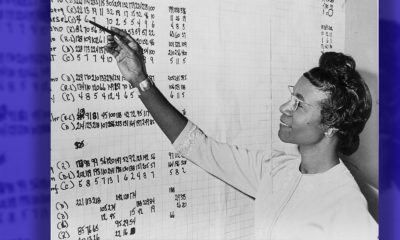Politics
Lawmakers Seek to Wrap up Costly Tribal Relocation Program

This Saturday, Jan. 24, 2015 photo provided by Ron Lee, Office of Rep. Ann Kirkpatrick shows Democratic U.S. Rep. Ann Kirkpatrick of Arizona, right, speaks with tribal members on the Hopi reservation in northeastern Arizona. (AP Photo/Office of Rep. Ann Kirkpatrick, Ron Lee)
Felicia Fonseca, ASSOCIATED PRESS
FLAGSTAFF, Ariz. (AP) — The rolling hills of northeastern Arizona where cornfields lined a watering hole and sheep grazed in the distance were home to Susie Robinson and her extended family. When she moved farther east into a new four-bedroom home, it wasn’t by choice but the result of a bitter land dispute between the Navajo and Hopi tribes that dates back centuries.
The federal government’s attempt to have these tribes share land failed miserably, leading to one of the largest single relocation efforts in U.S. history. Thousands of Navajos have been transplanted into new homes off Hopi land, while dozens of Hopis have been moved off Navajo land.
Federal officials are trying to figure out how best to wrap up the work of the relocation program that has exceeded its original $41 million price tag by more than $500 million and dragged on decades longer than planned. The effort threatens to get even costlier with many people still awaiting new housing.
“I want to move this forward,” said Republican U.S. Rep. Ken Calvert of California, who recently visited the reservations with other congressional delegates to hear from tribal leaders on the matter. “The relocation program was never intended to be carried on in perpetuity.”
The Office of Navajo-Hopi Indian Relocation was established by Congress in the years after the neighboring tribes were assigned reservations. It underlines a history of animosity between the Navajo and Hopi that has included threats of violence over property and clashes over cultural, business and political views.
Land is the most contentious issue.
The Navajo and Hopi tribes have occupied the same territory for centuries, though Navajos tended to be more nomadic sheepherders and Hopis mostly resided on three mesas towering above the surrounding desert.
In 1882, President Chester Arthur designated 2.4 million acres in Arizona for the Hopi Tribe and other Indians. Hopis outnumbered Navajos six to one on the land, but the Navajo population grew over time.
The federal government later gave the tribes the OK to sue over the land, and the Hopis responded in 1958 by seeking sole control of it. Four years later, a federal court deemed 1.8 million acres a joint-use area.
But the tribes were not amenable to sharing the land and, ultimately, Congress divided it and ordered tribal members to leave each other’s reservations. The Navajo Nation — the country’s largest reservation at 27,000 square miles — now completely surrounds the 2,500-square-mile Hopi reservation.
When the federal government proposed relocation, some Navajos armed themselves and threatened bloodshed if anyone tried to move them.
About a handful of Navajos who refused to leave Hopi land still live there under Hopi jurisdiction. Tensions run high at times, particularly over livestock grazing. The Hopi Tribe seized sheep from Navajos last year to preserve the vegetation.
The two tribes also have clashed in other areas. Until recently, they refused to be in the same congressional district. The Hopi Tribe also has been fighting a proposal for the Navajo Nation to build an aerial tram into the Grand Canyon.
“The relocation basically was a very traumatic experience for Navajo families who were directly affected,” Navajo lawmaker Walter Phelps said. “But it was also a very traumatic experience politically that has a certain amount of impact on the relationship between the tribes and the federal government.”
Still, the relocation program mushroomed, with the number of people eligible for housing benefits almost four times higher than expected.
In all, more than 7,200 heads of household have sought relocation benefits, representing 16,386 people. The relocation office has approved more than half of those applications.
The program was slated to end in 1986, but Navajo opposition to relocation early on and a shortage of suitable land to build houses helped prolong it.
Today, about 120 Navajos still await homes, 300 administrative appeals are pending, and eligibility is being determined on 65 applications, according to a recent report from the Interior Department’s Office of Inspector General. The program’s cost could go up another $35 million to $82 million once those applications and appeals are settled.
Robinson moved into her new, stucco house on a 1-acre plot in 1985. It was much larger than the two-room house she shared with her mother growing up. But the windows, foundation and stucco started cracking within a year, and she doesn’t have the sheep, cornfields, watering holes or ceremonial hogan she had as a child.
For Robinson, the relocation house isn’t home.
“I still miss my old place,” said the 60-year-old teacher who works with special education students at a school on the Hopi reservation. “If I were to get that piece of land back, I would be there in a heartbeat.”
About a dozen Hopi families relocated to a community called Spider Mound on the Hopi reservation. They have decried the lack of paved roads, running water, electricity and fire suppression that the Hopi chairman’s office said they were promised.
The delegation from the U.S. House Appropriations subcommittee that Calvert chairs said it saw an obvious need to address areas of disrepair but wasn’t sure that would be covered by the relocation program.
The relocation effort could be completed faster with legislative changes that could include a cash payout instead of a new home, or an increase in annual appropriations, the Office of Inspector General report said.
Democratic Rep. Ann Kirkpatrick, whose district includes the Navajo and Hopi reservations, said she would work with the subcommittee to ensure the federal government meets its obligation to the tribes.
“They heard from a lot of concerned people who are relocates who spoke very eloquently about their conditions of living and how desperate the situation is,” she said.
Copyright 2015 The Associated Press. All rights reserved. This material may not be published, broadcast, rewritten or redistributed.
###
Activism
U.S. House Minority Leader Hakeem Jeffries Speaks on Democracy at Commonwealth Club
Based on his first speech as House minority leader, “The ABCs of Democracy” by Grand Central Publishing is an illustrated children’s book for people of all ages. Each letter contrasts what democracy is and isn’t, as in: “American Values over Autocracy”, “Benevolence over Bigotry” and “The Constitution over the Cult.”

By Linda Parker Pennington
Special to The Post
House Minority Leader Hakeem Jeffries addressed an enthusiastic overflow audience on Monday at San Francisco’s Commonwealth Club, launching his first book, “The ABCs of Democracy.”
Based on his first speech as House minority leader, “The ABCs of Democracy” by Grand Central Publishing is an illustrated children’s book for people of all ages.
Each letter contrasts what democracy is and isn’t, as in: “American Values over Autocracy”, “Benevolence over Bigotry” and “The Constitution over the Cult.”
Less than a month after the election that will return Donald Trump to the White House, Rep. Jeffries also gave a sobering assessment of what the Democrats learned.
“Our message just wasn’t connecting with the real struggles of the American people,” Jeffries said. “The party in power is the one that will always pay the price.”
On dealing with Trump, Jeffries warned, “We can’t fall into the trap of being outraged every day at what Trump does. That’s just part of his strategy. Remaining calm in the face of turmoil is a choice.”
He pointed out that the razor-thin margin that Republicans now hold in the House is the lowest since the Civil War.
Asked what the public can do, Jeffries spoke about the importance of being “appropriately engaged. Democracy is not on autopilot. It takes a citizenry to hold politicians accountable and a new generation of young people to come forward and serve in public office.”
With a Republican-led White House, Senate, House and Supreme Court, Democrats must “work to find bi-partisan common ground and push back against far-right extremism.”
He also described how he is shaping his own leadership style while his mentor, Speaker-Emeritus Nancy Pelosi, continues to represent San Francisco in Congress. “She says she is not hanging around to be like the mother-in-law in the kitchen, saying ‘my son likes his spaghetti sauce this way, not that way.’”
Activism
MacArthur Fellow Dorothy Roberts’ Advocates Restructure of Child Welfare System
Roberts’s early work focused on Black women’s reproductive rights and their fight for reproductive justice. In “Killing the Black Body: Race, Reproduction, and the Meaning of Liberty 1997)”, she analyzes historical and contemporary policies and practices that denied agency to Black women and sought to control their childbearing—from forced procreation during slavery, to coercive sterilization and welfare reform—and advocates for an expanded understanding of reproductive freedom.

Special to The Post
When grants were announced Oct. 1, it was noted that eight of the 22 MacArthur Fellows were African American. Among the recipients of the so-called ‘genius grants’ are scholars, visual and media artists a poet/writer, historian, and dancer/choreographer who each receive $800,000 over a five-year period to spend as they see fit.
Their names are Ruha Benjamin, Jericho Brown, Tony Cokes, Jennifer L. Morgan, Ebony G. Patterson, Shamel Pitts, Jason Reynolds, and Dorothy Roberts. This is the eighth and last in the series highlighting the Black awardees. The report below on Dorothy Roberts is excerpted from the MacArthur Fellows web site.
A graduate of Yale University with a law degree from Harvard, Dorothy Roberts is a legal scholar and public policy researcher exposing racial inequities embedded within health and social service systems.
Sine 2012, she has been a professor of Law and Sociology, and on the faculty in the department of Africana Studies at the University of Pennsylvania.
Roberts’s work encompasses reproductive health, bioethics, and child welfare. She sheds light on systemic inequities, amplifies the voices of those directly affected, and boldly calls for wholesale transformation of existing systems.
Roberts’s early work focused on Black women’s reproductive rights and their fight for reproductive justice. In “Killing the Black Body: Race, Reproduction, and the Meaning of Liberty 1997)”, she analyzes historical and contemporary policies and practices that denied agency to Black women and sought to control their childbearing—from forced procreation during slavery, to coercive sterilization and welfare reform—and advocates for an expanded understanding of reproductive freedom.
This work prompted Roberts to examine the treatment of children of color in the U.S. child welfare system.
After nearly two decades of research and advocacy work alongside parents, social workers, family defense lawyers, and organizations, Roberts has concluded that the current child welfare system is in fact a system of family policing with alarmingly unequal practices and outcomes. Her 2001 book, “Shattered Bonds: The Color of Child Welfare,” details the outsized role that race and class play in determining who is subject to state intervention and the results of those interventions.
Through interviews with Chicago mothers who had interacted with Child Protective Services (CPS), Roberts shows that institutions regularly punish the effects of poverty as neglect.
CPS disproportionately investigates Black and Indigenous families, especially if they are low-income, and children from these families are much more likely than white children to be removed from their families after CPS referral.
In “Torn Apart: How the Child Welfare System Destroys Black Families—and How Abolition Can Build a Safer World (2022),” Roberts traces the historical, cultural, and political forces driving the racial and class imbalance in child welfare interventions.
These include stereotypes about Black parents as negligent, devaluation of Black family bonds, and stigmatization of parenting practices that fall outside a narrow set of norms.
She also shows that blaming marginalized individuals for structural problems, while ignoring the historical roots of economic and social inequality, fails families and communities.
Roberts argues that the engrained oppressive features of the current system render it beyond repair. She calls for creating an entirely new approach focused on supporting families rather than punishing them.
Her support for dismantling the current child welfare system is unsettling to some. Still, her provocation inspires many to think more critically about its poor track record and harmful design.
By uncovering the complex forces underlying social systems and institutions, and uplifting the experiences of people caught up in them, Roberts creates opportunities to imagine and build more equitable and responsive ways to ensure child and family safety.
Activism
Oakland Post: Week of December 18 – 24, 2024
The printed Weekly Edition of the Oakland Post: Week of December 18 – 24, 2024

To enlarge your view of this issue, use the slider, magnifying glass icon or full page icon in the lower right corner of the browser window. ![]()
-

 California Black Media4 weeks ago
California Black Media4 weeks agoCalifornia to Offer $43.7 Million in Federal Grants to Combat Hate Crimes
-

 Black History4 weeks ago
Black History4 weeks agoEmeline King: A Trailblazer in the Automotive Industry
-

 California Black Media4 weeks ago
California Black Media4 weeks agoGov. Newsom Goes to Washington to Advocate for California Priorities
-

 California Black Media4 weeks ago
California Black Media4 weeks agoCalifornia Department of Aging Offers Free Resources for Family Caregivers in November
-

 Activism3 weeks ago
Activism3 weeks agoOakland Post: Week of November 27 – December 3, 2024
-

 Activism4 weeks ago
Activism4 weeks agoOCCUR Hosts “Faith Forward” Conference in Oakland
-

 Activism4 weeks ago
Activism4 weeks agoRichmond Seniors Still Having a Ball After 25 Years
-

 Activism2 weeks ago
Activism2 weeks agoButler, Lee Celebrate Passage of Bill to Honor Congresswoman Shirley Chisholm with Congressional Gold Medal






















































